No matter how much you think you know about branding, food branding is a bit trickier to pin down than other industries. The food industry relies on natural urges and “gut” feelings, and branding visuals can make your customers hungrier—or lose their appetite.
For anyone working in food—a broad category that includes manufacturers of packaged foods, brick and mortar retailers, restaurants, food bloggers, food-related services and beverage companies—the nuances of food branding strategies aren’t exactly obvious. In this guide, we give an overview on food branding, explaining what you need to know to make the right impression on customers.
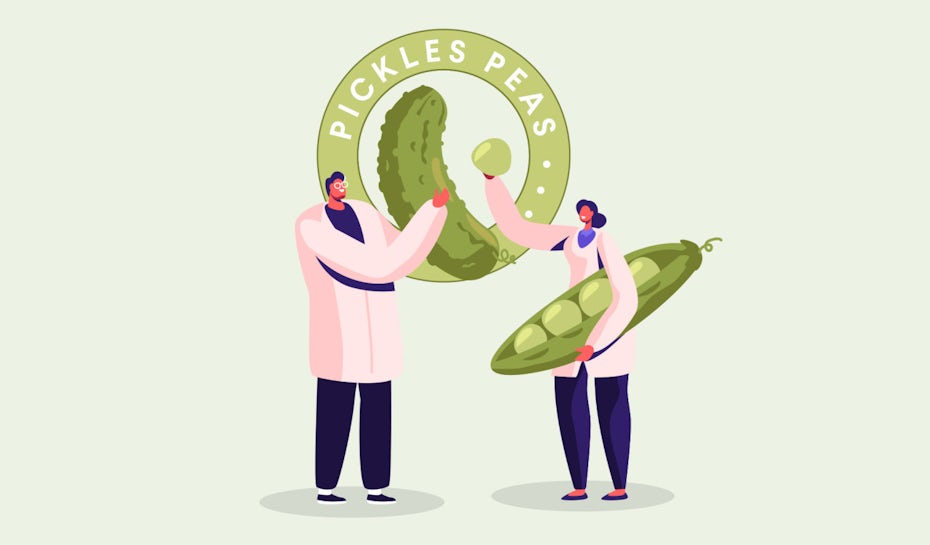
The basics of food branding
—
If your company were a person, “branding” would be how that person presents themselves—how they dress or wear their hair, plus how they act, whether they crack jokes or formally adhere to etiquette. Branding is more than just publicity; it influences how consumers perceive your company and the value they assign it.

When done well, branding creates personal, even emotional ties with your customer base, not to mention separating and differentiating you from your rivals in a meaningful way. You can accomplish these results through visuals, such as using the right colors, shapes and typography and also through the way you communicate, like your content strategy or which channels you use. We explain these five areas in detail below.
Your branding choices should complement your business strategies and goals. For example, a company whose top priority is customer acquisition benefits from different branding strategies than a company whose priority is customer retention. But to complicate things further, the food industry has to make branding decisions based on both their business style and what their audience finds appetizing.
Below we explain the best stylistic choices for successful food branding strategies, but before we get into that, let’s talk business. There are some key aspects of your company that you’ll need to understand before you dive into the creative process.
3 questions to ask yourself

You’ll need to answer some hard questions about your business before you can determine what branding strategies will work best. These three key questions will help you get to the heart of what your business is really all about
-
- Who’s buying your product? Who is your target market or customer? What are their demographics? What do they like, how do they want to be talked to and what are their pain points (related obstacles and inconveniences they want removed from their life)? Branding is tailored to your target customers, so the more you understand them, the better.
- How would you describe your brand? This is more of a creative exercise to help pinpoint your branding style. If you have an eloquent answer to this question, great! If not, don’t sweat it—try listing out adjectives to describe your ideal branding personality until you have a good idea. Adjectives like energetic, passionate, inviting or dependable can help you hone in on your brand’s voice and character.
- What separates you from your competition? In other words, what’s your value proposition? Why should customers choose you instead of your rivals? A key aspect of branding is isolating your most attractive features and playing those up so people think of you first when it’s time to part with their money.
Once you know the answers to these questions, you can begin to construct your ideal food branding strategy. But what exactly does food branding entail?
The 10 essentials of a successful food brand
—
The “10 essentials” a company needs for successful branding are the manifestations and deliverables of your branding efforts—the tangible results of your stylistic choices.
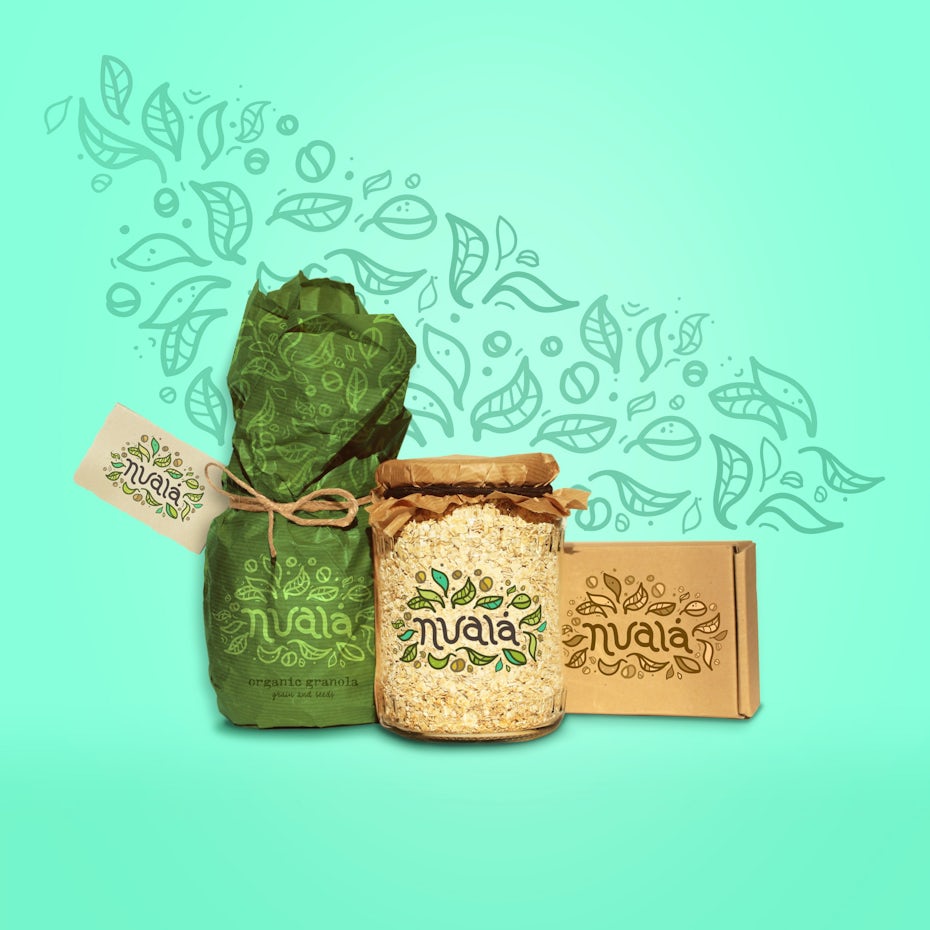
- Logo — The face of your brand and centerpiece of your entire food branding strategy. The most important branding element, your logo anchors everything your company represents.
- Website — The way your website looks is important, but looks don’t mean anything if it doesn’t work. Functionality and ease-of-use are the king and queen of website design; they reveal just how adept your company really is.
- Brand messaging — What is your brand saying? Your brand messaging includes its values, mission statements, beliefs, frequent talking points and, of course, the brand slogan.
- Product packaging — When it comes to food branding, your choice of product packaging is crucial. Packaging has the power to attract customers and is a visual representation of the culinary experience your product offers.
- Brick & mortar shops — This is optional for some food brands, but most food businesses need to consider how to brand their shops, stores or locations. This includes things like in-store branding, branded aprons, napkins, signs, mugs, interior design and music choice, but also the customer service and in-store experience you offer.
- Social media — A personal way to engage directly with customers and start a dialogue. The type of posts you publish, as well as the channels you publish on, can provide a direct link to your specific niche market.
- Email marketing — Emails are a favorite strategy for online marketers because they’re more intimate than other methods of outreach, and interestingly have some of the best clickthrough rates. By sharing the same communication methods as friends and family and speaking directly to the reader one-on-one, email marketing gives you the chance to present your brand in a human light.
- Advertising — Some traditions never die. Paid advertisements, though not as trustworthy as they used to be, are still quite effective in increasing the reach of your brand message, accessing potential customers that other avenues can’t match.
- Content & influencer marketing — Blog posts, videos, photos for social media, infographics and the like. Just as different artists have different styles, the various types of content you produce weave together a cohesive tapestry that tells potential and existing customers who you really are.
- Merchandise — This could be traditional swag, like T-shirts or mugs sold in your restaurant, or something more creative like tote bags, cardboard cups and branded take-home containers.
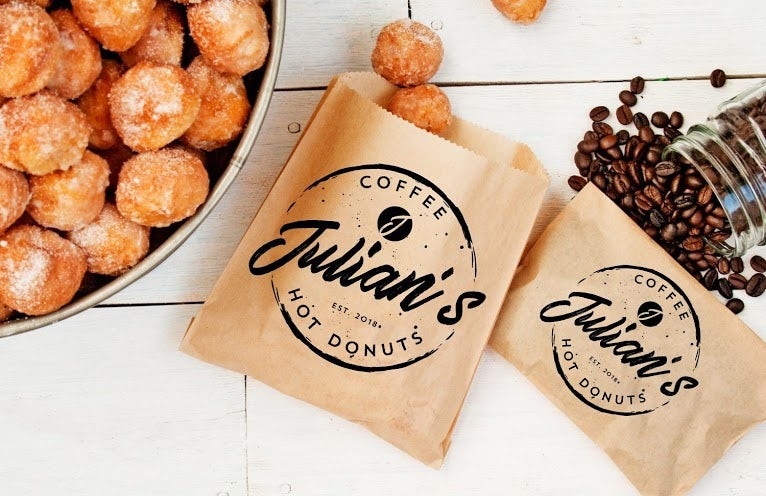
These are the 10 main areas of a successful food branding strategy, and the methods you’ll use to create a cohesive and consistent branding personality. Keep them in mind as you make decisions about the branding details we discuss in the next section.
Best branding styles for the food industry
—
What colors are the most appetizing? Do hungry customers respond better to circles or squares? Where do all the foodies hang out online? With a market as particular as the food industry, certain branding techniques work better than others. Here’s a breakdown of the best food branding techniques for different areas of your outreach.
(Keep in mind that your branding must also reflect your company personality; the strategies below are data-based suggestions about what works for food branding in general, but don’t forget to consider your own unique style when finalizing decisions.)
Best colors for food branding
In a nutshell, warm colors—red, orange and yellow—work best for food branding. Of these, red is the best for inciting hunger (perhaps due to the abundance of red foods in nature). And because warm colors pair nicely with each other, you see a lot of red-yellow or red-orange food branding.
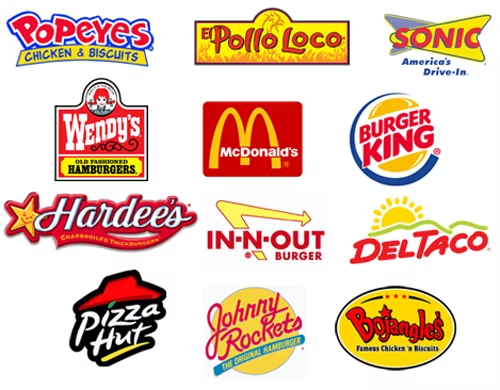
One trip down a street of fast food chains proves how accurate this is. We see these warm color combinations in almost all of our favorite fast food chains. Green on the other hand is popular with natural and organic food brands.
Based on color theory, it’s recommended to avoid blue in food branding. Aside from blueberries, it’s rare to find edible blue food in the wild, so consequently blue has the least effect on appetite. But for branding in general, blue is hands-down the most popular color, presumably because its link to trust and community. For that reason, you still see blue as a frequent accent color in food branding, as with Burger King, Sonic and Popeyes.
Best shapes for food branding


In branding, shapes are quite influential in how a brand’s personality is received. Brands with circular logos, for example, are seen as more inviting and casual, whereas rigid rectangular shapes are seen as more reliable or effective. This means the shape should relate to your brand identity instead of your industry.
That said, most food brands benefit from friendly brand personalities, and logos with circles or curves come across as more approachable. This isn’t just about a circular frame around the logo, but also curvaceous lines within the logo itself, as seen in the Organic Blend logo below.
Rectangular, triangular and sharp angled logos have a more formal feel and perform better in industries like legal or financial, although some high-end restaurants or wine companies (like FZ Wines below) might also take advantage of that formality.

If you’d like a serious logo but still want customers to feel at home, you can always blend shapes together. Adding curves or soft corners to an otherwise angular shape makes it seem more casual, so you can implement that “softer side” to any degree you want.
Best typography for food branding
There is no single “best typography” for the food industry. The size, weight and color of your text, not to mention the font, all have their own unique connotations for your brand personality, so the best ones for you depend on what kind of brand you strive to be.
There are some common trends among the food industry, though. For example, if you’re going for an old-fashioned tavern style, like O’Leary’s Ale House, a retro font can convey that to viewers instantly.
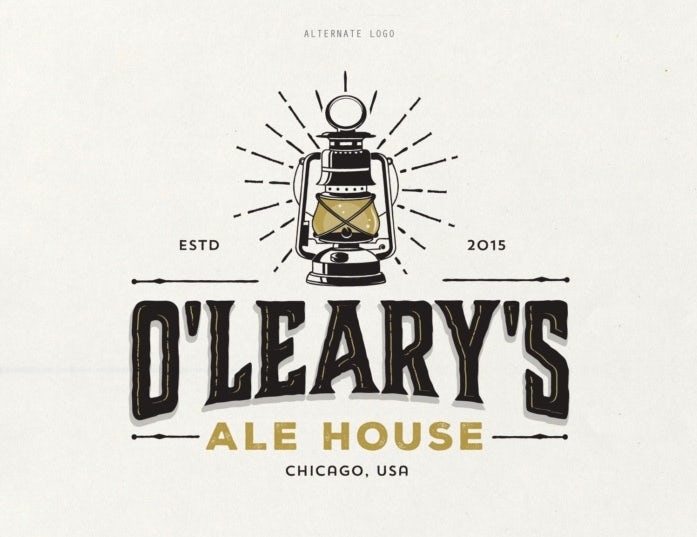
Or, if you want people to see you as a modern eatery or food producer like Swirl Frozen Yogurt, a minimalist sans serif typography looks the part.
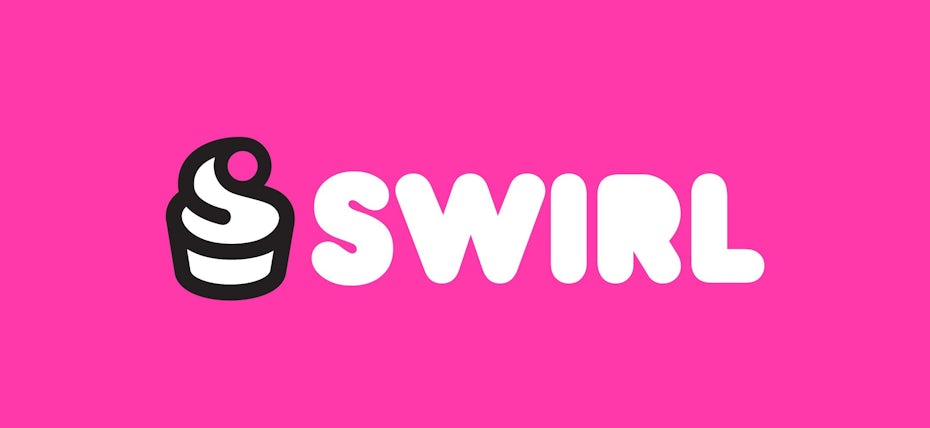
Like shapes, you can always blend together two opposing styles to create something distinctly you. Keep in mind that curves are “friendly” and straight lines/sharp corners are “professional.” So a font with lots of curves, like cursive, will attract a more casual clientele than a strict, classy font.
Packaging your food or beverage
Food and beverage packaging is a vast universe—and a key element of food branding. Your customers’ first experience of your product happens with their eyes, not their taste buds, so the way you house your food or drink matters a lot. Packaging also helps distinguish your product from the zillions of other options crowding shelves (or online grocery web pages) these days. Packaged foods are an $800 billion dollar industry in the US alone. That’s a lot of pasta, snack bars and yogurt!
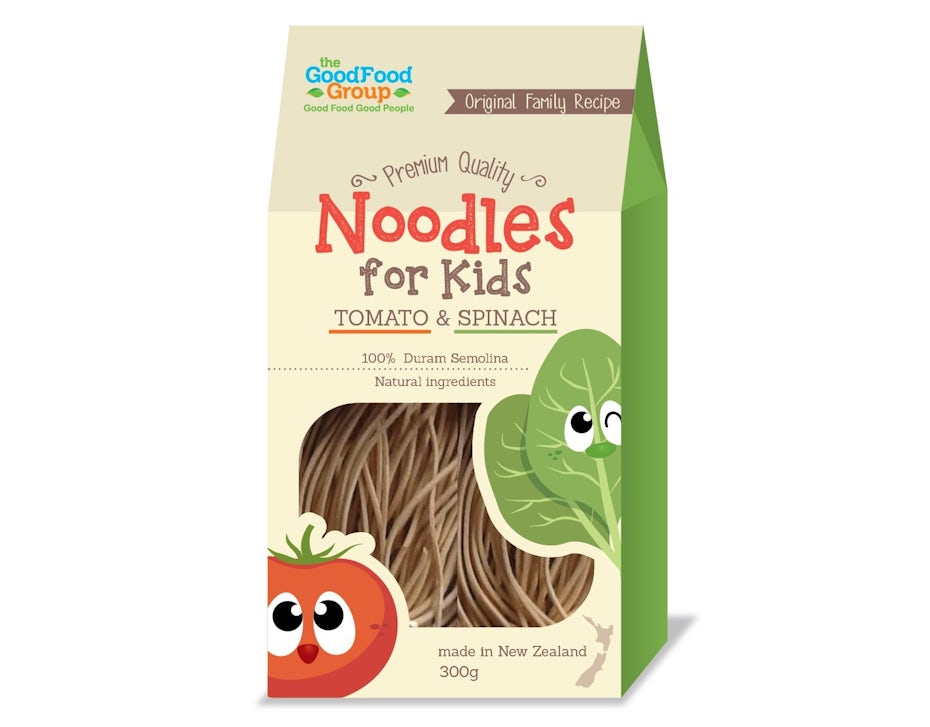
When considering packaging for your food, drink or snack, looks definitely matter, but appearances are meaningless if your packaging doesn’t do its job. Before you embark on a packaging design journey ask yourself, and your designer, a few key questions:
- What is my product? What are the materials and dimensions? Is it a single product or are there (or will there be in the future) several flavors or formats? A bit of forward thinking on the front end will help you avoid trouble as your brand evolves.

- Who is my customer? Am I selling to eco-conscious folks, children or tourists? Will my customers have expendable income or are they on a strict budget? It is essential to understand who will be purchasing your products and brand your food product accordingly.

- What purpose does the packaging serve? Does it have to keep the food soft or crunchy? Does it have to stand up to refrigeration? Food packaging carries a lot of responsibility—in the US it also has to follow FDA requirements for transparent ingredient and nutrient listing.
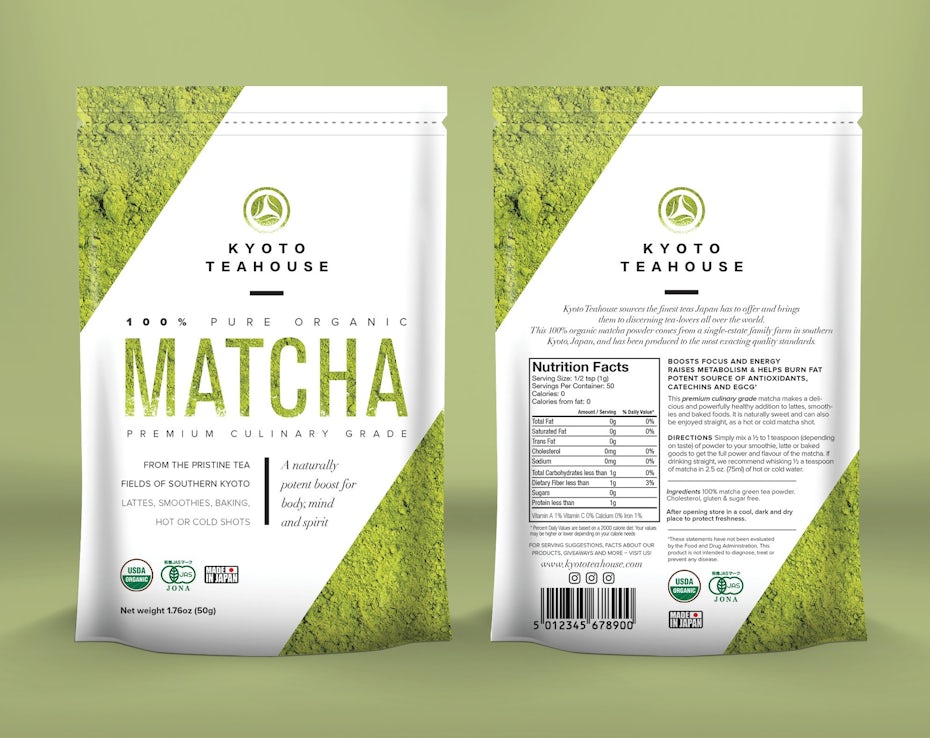
- Where will consumers see the package? (Will it be sold exclusively online? At small speciality grocers? Or at big name stores like Target or Walmart?) Where consumers see your product also influences its packaging.
When designing your packaging, keep details like logo placement, materials, colors, fonts and shapes in mind. What to learn more about product packaging? Take a look at this ultimate guide to packaging design.
In-store branding
It’s clear that online shopping isn’t going anywhere any time soon. It’s just so deliciously convenient. But the ease of one-click shopping can’t take away the allure of an in-person purchase. If you’re thinking of opening up a brick and mortar food or beverage outlet, you’ve got a few things working in your favor.

The first, and most notable benefit of an in-store experience is the benefit of interfacing with a knowledgeable retail associate (you can’t get that on Amazon). Visiting a brick and mortar store also allows you to see, hold and possibly try a product before committing to purchasing it and an in-store purchase also hits all the notes of instant gratification, allowing you to walk out of the store with the item in hand with zero shipping charges.
Lastly, buying a product from an actual human being in legitimate establishment lends an air of credibility to the experience (vs buying something from an unfamiliar online brand and crossing your fingers that you’ll receive a quality item).

As for branding the in-store experience, your brick and mortar store should echo the branding elements you’ve already established through your logo and your color and font choices, as well as the overall aesthetic and tone expressed in your social media marketing. If your color palette is bright and modern, with subversive, urban messaging, your store better give customers a similar experience. Your customers’ senses will be activated from the minute they walk in the door. The layout of the space, your logo placement and staff uniforms (or lack of uniform) all come together to create a cohesive sense of your brand.
Food branding on social media
Food brands can successfully post their content on any social media—even LinkedIn professionals would be interested in a time-saving recipe. But the best channels for food branding are typically the ones that revolve around visuals because they’re a hotbed for food pics. Instagram, Pinterest and Snapchat, with their emphasis on images and videos, are the best fit for most food branding strategies. (Bonus points for including your logo in the background!) If you make a branding video, you can also utilize YouTube as well, plus link your YouTube video on all of your social media channels.
When launching a social media campaign stick tight to the branding guidelines you’ve already established and follow these simple, yet powerful guidelines:
Tell a story
Random images of food products are fine, but they’ll pack a bigger punch if they’re telling a quick story, are part of a greater story about you or your brand or are connected to a story or idea that everyone can relate to.
Invest in visuals
It’s all about the visuals, baby. Shoddy images won’t fly on social media—and posts without images get significantly less action than those with striking photos. Think about the fuzzy or amateurish images you sometimes see while scrolling Instagram. Do they inspire you to stop and dig deeper into the post? Nah. This is where the concept of “you only have one chance to make a first impression” really comes into play. Take the time to teach yourself about capturing quality shots of your food product. This requires learning about cameras (yes, your iPhone may be adequate, but make sure that’s true before you post your first image), lighting, shot set-up and visual storytelling. To ensure quality shots, many brands hire a professional stylist/food photographer to take their social media shots.
Milk Bar is all about the sweet shot:



Give them video
Quality images are essential, but video is where it’s at. Quick social media videos of your food product in action can spark strong cravings in your consumers. Take Peach Mart’s quick Instagram videos of Asian snack foods. Yum!
Be consistent
Take some time to create a visual calendar for your social media posts—perhaps you’ll be posting each day of the week (a good idea!) and will feature an different image of your product or different products in your line with a different caption/story. Be sure that the images have a consistent tone and feel. You want to give your users a cohesive experience of your Instagram or Pinterest page. If some shots are dark and moody and others clean and bright it will feel jarring. Also, master the hashtag. Hashtags are your key to connecting with more people. Get familiar with popular industry hashtags as well as customized hashtags specifically for your unique brand.
Ice and Vice, a hip NYC ice cream shop, takes most of their ice cream shots against a black background.




While Moon Juice, a trendy LA-based supplement store, is all about bright, colorful images evoking feelings of good health and vitality.




Branding for the food industry: a fruitful market!
—
Sometimes you don’t know the perfect food brand strategies for you until you see them with your own eyes. If you’re looking for logo inspiration, checkout some of our previous articles for food branding inspiration:
Or, if you already know what you want and are ready to get started on your food logo, packaging, website or food truck wrap, click here to find the perfect designer for your style.
Need help branding your food business?
Let our community of designers create a mouth-watering design for you.
The post The complete guide to food branding appeared first on 99designs.
The complete guide to food branding posted first on https://www.lilpackaging.com
No comments:
Post a Comment